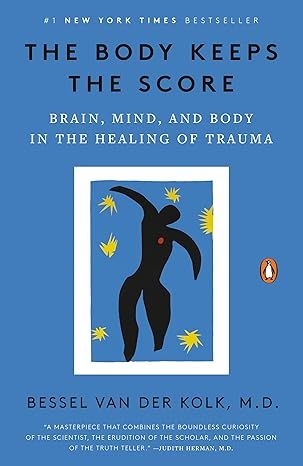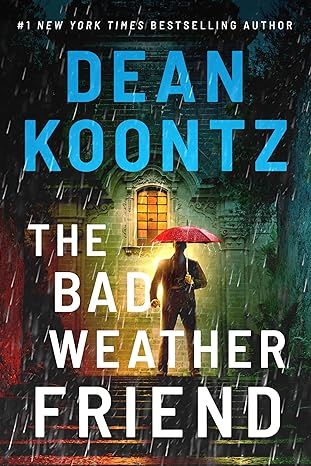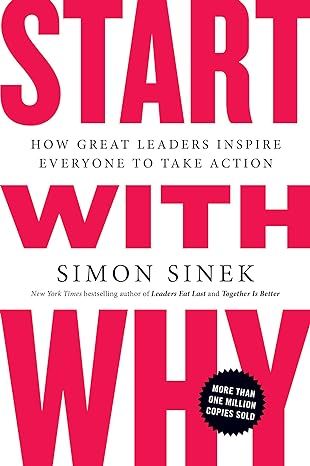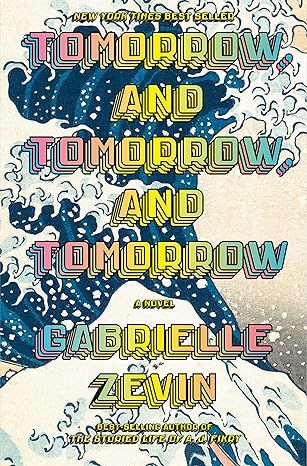
The Body Keeps the Score: Brain, Mind, and Body in the Healing of Trauma
4.8 out of 5
74,827 global ratings
#1 New York Times bestseller
“Essential reading for anyone interested in understanding and treating traumatic stress and the scope of its impact on society.” —Alexander McFarlane, Director of the Centre for Traumatic Stress Studies
A pioneering researcher transforms our understanding of trauma and offers a bold new paradigm for healing in this New York Times bestseller
Trauma is a fact of life. Veterans and their families deal with the painful aftermath of combat; one in five Americans has been molested; one in four grew up with alcoholics; one in three couples have engaged in physical violence. Dr. Bessel van der Kolk, one of the world’s foremost experts on trauma, has spent over three decades working with survivors. In The Body Keeps the Score, he uses recent scientific advances to show how trauma literally reshapes both body and brain, compromising sufferers’ capacities for pleasure, engagement, self-control, and trust. He explores innovative treatments—from neurofeedback and meditation to sports, drama, and yoga—that offer new paths to recovery by activating the brain’s natural neuroplasticity. Based on Dr. van der Kolk’s own research and that of other leading specialists, The Body Keeps the Score exposes the tremendous power of our relationships both to hurt and to heal—and offers new hope for reclaiming lives.
About the authors
Bessel van der Kolk
Bessel van der Kolk (born 1943) is a Boston based psychiatrist noted for his research in the area of post-traumatic stress since the 1970s. His work focuses on the interaction of attachment, neurobiology, and developmental aspects of trauma’s effects on people. His major publication, the New York Times bestseller, 'The Body keeps the Score', talks about how the role of trauma in psychiatric illness has changed over the past 20 years; what we have learned about the ways the brain is shaped by traumatic experiences; how traumatic stress is a response of the entire organism and how that knowledge needs be integrated into healing practices.
Read more
Reviews
S. Rose
5
My Life-Saving Trauma Bible
Reviewed in the United States on January 19, 2021
Verified Purchase
“I think this man is suffering from memories.”
So, this book changed my life. No, really. In fact, it’s saved it.
I have severe PTSD. And despite years of therapy, it seemed to be getting worse instead of better. My flashbacks were occurring more and more often. I was becoming more and more lethargic and frozen in time. And suicide was constantly just there in my mind. Constant. I’d even set a date.
And then my insurance quit paying for my therapy.
As a last, desperate grasp for help, I started to read this book.
I have never read anything more validating and more hopeful. To see the brain scans and hear the science that explained exactly what has happened to my brain, what is going on during my flashbacks and why I’m always physically sick—all the times I’ve gone to a doctor in pain or feeling like I’m having a heart attack or a stroke only to be told they can’t find anything wrong—brought me to tears. It gave me all the answers I’ve been searching for. It gave everything a scientific, medical explanation—and a path to healing.
He explained why all of my EMDR therapy wasn’t working—it was because my therapists (bless them!) were doing it wrong. And I’ve been able to take what I’ve learned from my therapists and this book and do EMDR on my own, and today... today I feel more like my old, genuine self, than I have in years. The shadow of suicidal thoughts no longer follows me. I feel light. And I have hope—genuine hope—that I actually can get better! I’m always telling people they can get better and there’s hope for them... but I haven’t felt that way about myself. Now, I do. I haven’t had that hope in a long, long time. And I even think, after years of struggling and finally making such great progress in such a short time, maybe—just maybe—I can be cured. I never thought I’d say that! The future is so exciting to me now!
If you have trauma, do be warned—Dr. van der Kolk talks a lot about his clients and their traumatic experiences and it can be very triggering. Some of the details I felt he definitely could’ve left out, honestly. However, the scientific information, the validation and the information on how to heal trauma, has made this book absolutely priceless to me. It’s my trauma bible. I’ll be re-reading it in the future and constantly referring to it.
Edit: I keep seeing reviews on here from people who were super upset by the story of the Vietnam vet who murdered a family, raped the mother and left her to die. Honestly, I flipped out at that part, too (aka, had a flashback), in large part because I misunderstood what Dr. van der Kolk was trying to say. I thought for a moment that he was trying to justify what the man did, and had to email my old therapist about it. She read the scene and encouraged me to reread his conclusion, and pointed out to me that he’s actually saying how difficult it was to try to treat him objectively because what the man had done was an absolute atrocity. He never actually justifies it. He calls it an atrocity. It’s just worded weird, and if you’re already triggered by what you’ve just read, it is easily misunderstood. I hope he clarifies this in future editions. You have to keep in mind that, van der Kolk’s target audience is actually other therapists. For this reason, it was difficult for me to read. I was violently attacked and molested at 5-years-old and repeatedly raped and abused as a teenager. His going over other people’s abuse is overly detailed at times and I had to skip many of those scenes.
However, I don’t hold any of this against him at all. The information in this book has changed my life, I feel seen and validated, and I stand by that almost a year after reading it. I keep it right on my writing desk where it’s easily found for reference. Am I cured yet? No. Did my flashbacks stop? Nope. This year has been an unexpected nightmare full of triggers. But I’ve made so much progress. And I have hope. And that’s what I need to make it through each day. I sincerely believe that, through a lot of work (which I’m willing to do!), I can be cured in time. And all of that started with this book.
Read more
402 people found this helpful
Laura Belk
5
just get past the intro which is hard to read b/c triggering: the rest of the book isn't like that
Reviewed in the United States on May 15, 2024
Verified Purchase
Major trigger warning for the intro: trauma
Please don't let the intro stop you. This book is soooooooo worth it.
I have friends who stopped reading this b/c the intro is so painful to read about the veteran in the rice patty in Vietnam; it's triggering. I have to insist that they keep reading because the rest of the book is not triggering or like the intr
You learn sooo much from this book. Well written. Easy to read. I give it to all my friends. Excellent education even for those without trauma.
I gift it to friends.
Read more
5 people found this helpful
Tom Cloyd, MS MA
5
Buy this book!
Reviewed in the United States on September 28, 2014
Verified Purchase
Psychiatrist, professor, world-class researcher, and traumatologist Bessel van der Kolk MD requires no introduction to trauma psychotherapists. My enduring impressions of him over many years is one of relevance, cogency, frankness, and accessibility - served up with a subtle dash of impishness. He tends to be a bit disruptive - something of a provocateur - and everything of his I have ever read has taught me something, confirmed something important, or pushed my thinking in a new direction. When he has something to say, I want to hear it.
However, I almost didn't buy this book: I was put off by the title. Familiar with major reviews of PTSD psychotherapy outcomes research, I know that research support for body-oriented approaches to treating psychological trauma psychopathology is thin at best, and such treatment models simply do not have the research validation of either EMDR (Eye Movement Desensitization and Reprocessing) and PE (Prolonged Exposure), neither of which are especially body-focused.
J. Interlandi's excellent article anticipating publication of this book - "A Revolutionary Approach to Treating PTSD" (New York Times Magazine, 2014.05.22 - available online) - initially supported my fears that for some inexplicable reason van der Kolk was now promoting some treatment model for which we have little confirming research. "Psychomotor therapy is neither widely practiced nor supported by clinical studies," Interlandi informs us. Provocateur he may be, but I'm strongly biased in favor of paying attention to therapies for which we do have solid empirical validation. Our clients do not deserve to be experimental subjects - maybe not even if they agree to this, as I'm not sure they can ever know enough to make a truly informed consent. Knowledge that PTSD and related disorders are usually highly curable, when using the right treatment protocols, sadly remains the possession of a minority of people, even in the professional psychotherapy world.
Yet the account of van der Kolk's therapy work in Interlandi's article is gripping. Becoming completely absorbed in the account, I was convinced. (I've been here before, reading van der Kolk's own accounts of his work.) And so the disruption begins! Deeper into the article, he has me. Van der Kolk's critique of CBT (cognitive behavioral therapy - a general class of therapies) and PE (E. Foa's exposure therapy model) is withering and correct: neither really work. "Trauma has nothing whatsoever to do with cognition...It has to do with your body being reset to interpret the world as a dangerous place....It's not something you can talk yourself out of." Interlandi reports that "That view places him on the fringes of the psychiatric mainstream."
But he's right, and I can't stress this enough. Why? Because as a trauma treatment professional I'm well aware of what the trauma treatment outcomes research actually says. The best current summary of this research well may be chapter 2 of Ecker, et al.'s (2012) "Unlocking the emotional brain". (Buy this book, too!) Ecker et al. brilliantly presents a synthetic summary that encompasses 11 existing therapy models which actually DO cure trauma psychopathology, if done right. In this context, what van der Kolk is doing makes perfect sense. Finally, it appears, the trauma psychotherapy field is moving toward a consensus which has strong credibility.
Van der Kolk's new book has many virtues. Parts One and Two (102 pp) provide a substantial review of the neuropsychology of trauma's impact on a person. It's fun, interesting, informative reading, for professional and layperson alike. Part Three (64 pp) surveys childhood development, attachment experience, and "the hidden epidemic of developmental trauma". Van der Kolk has for years been a leading champion of the idea that there is a type of PTSD which substantially differs from all the rest. It develops in response to chronic child abuse and/or neglect. I completely share his belief that the diagnosis of Developmental Trauma Disorder (sometimes called C-PTSD, with "C" meaning "Complex") is overdue for formal recognition. I find his review of the struggle to legitimize DTD as gripping and distressing as anything else in the book. It is anguishing to know that a major problem exists, AND that the psychiatric establishment simply refuses to acknowledge it. DTD/C-PTSD is no fantasy. We see and treat these people, as children and adults. They exist, and they are nothing like "ordinary" PTSD treatment clients.
Part Four (29 pp) focuses on memory. I've long thought that much writing on treating psychological trauma seems to miss the point: trauma memory is what causes the problem. Deal with that and the symptoms vanish. Why is this so hard to understand? Yet, it is not a common understanding at all. Explaining how trauma memory works is invariably enlightening to my clients. And experiencing what happens when we change the nature of trauma memory is revelatory to someone who's lived with it for years, if not decades. As he does throughout the book, van der Kolk offers fine stories about clients who have experienced exactly what I've seen happen in my clients, making excellent use of what cognitive research tells us: people understand things best through narratives. Offer a good narrative and you convince.
Psychological trauma therapy is complex, but we are now well prepared to launch into the book's core content - Part Five (154 pp), "Paths to Recovery". He gets right to it: we cannot undo the trauma, but we CAN undo its effect on us, and so get our "self" back. Ch. 13 reviews existing therapies. His approach is to repair "Descartes' Error" (see Damásio's 1994 book of that title) by viewing mind and body as a single coherent functional unit. His topical coverage is complete and his critique of current therapies acute - not to be missed.
He then writes of the importance of language (Ch. 14). We construct our narrative mainly in words, and the words we choose are critical. But language is not enough (this anticipates his next two chapters). Our senses encompass a larger world, and it's center is our body, where all our sensory receptors are located. Then he introduces the treatment model he's long advocated: EMDR (Eye Movement Desensitization and Reprocessing). I'm trained in EMDR, and in fact van der Kolk and I had the same instructor for our advanced training: Gerald Puk PhD. Van der Kolk tells an amusing and self-deprecating story about his advanced training experience, in which Puk was able to provide a strong corrective to his approach to clients. This is typical van der Kolk - he's a truth-teller, even when it may put him in a poor light! And,after all, at this point he has nothing to prove to anyone.
Finding an EMDR therapist is not hard (see his "Resources" section). Nor is it hard to find a yoga instructor, and yoga is what he advises for helping a trauma victim get back into their body. Yoga is a wise choice, because it is available, already widely known, and adaptable to a wide range of individuals and capabilities.
There is much more in Part Five, and the focus is on self-empowerment. "Victim no more!" as they say. Most trauma therapists have a keen interest in seeing their clients leave therapy charged up and ready to fully embrace their life - that certainly is my own emphasis. Van der Kolk's thoughts on self-empowerment for those in recovery from psychological trauma will be invaluable to any trauma psychotherapy client.
For psychotherapy professionals, this book will be both delightful and confirming. For everyone else, it will be a readable, gripping, highly educational tour of topics all of which are critical to a successful transition back from the impact of psychological trauma. That he gives prominent though not dominating emphasis to developmental trauma disorders is entirely appropriate. Our society has yet to grasp that child abuse and neglect is a more often chronic than not, and that its impact is largely ignored and poorly treated, if at all. This does not have to be. Get educated (this book will do that), then commit to being an advocate for children as well as for adults impacted by trauma. They all deserve the chance to be healed, and we can now do that. Van der Kolk shows us how.
The physical book: Jacket design is pleasant and interesting. Binding is less so: color of spine wrapping is semi-florescent, and of paper, not cloth. The book feels substantial and pleasant to hold and look at.
Organization -
- 6 pp: prefatory praise by peers and related luminaries (interesting comments from some important people in the field);
- 2 pp: Table of Contents;
- 356 pp: actual text;
- 4 pp: Appendix: Consensus proposed criteria for developmental trauma disorder
- 3 pp: Resources
- 4 pp: Further reading
- 51 pp: Notes
- 21 pp: Index
Read more
2 people found this helpful
Eyes Dark & Mellow
5
Amazingly Engaging Neuroscience
Reviewed in the United States on May 25, 2024
Verified Purchase
The author has a way with words, and is a compelling storyteller. Great case studies. Excellent diagrams are well integrated into the text. It’s a long, tedious journey, but you want to stick with it if you know or interact with trauma victims, or if you want to understand why dysfunctional people (maybe you?) “irrationally”reject paths to better lives.
The author could have unpacked polyvagal theory and shared why it’s controversial since his approach seems to rely heavily on it. His modest bragging about his long association with Harvard eventually gets a little tiresome. But the bottom line is that you will come away with a deeper appreciation of the impacts of trauma, and you may learn that sexual abuse is far more widespread than you’d ever imagined. Apparently, we need better ways to treat trauma instead of medicating its consequences as discrete, independent psychoses.
Read more
4 people found this helpful
JBM
5
Journey Through Trauma Healing
Reviewed in the United States on May 17, 2024
Verified Purchase
"The Body Keeps the Score" by Bessel van der Kolk is not just a book; it's a guiding light through the labyrinth of trauma, offering profound insights and practical tools for healing. As someone who has experienced trauma firsthand, this book has been nothing short of life-changing in my journey towards understanding and processing my experiences.
Comprehensive Understanding: One of the most remarkable aspects of this book is its comprehensive exploration of trauma and its effects on the brain, mind, and body. Van der Kolk draws upon decades of research and clinical experience to provide a deep understanding of how trauma manifests physically, emotionally, and psychologically. His insights shed light on the complex interplay between trauma and various mental health conditions, offering clarity and validation to those who have struggled to make sense of their experiences.
Holistic Approach: "The Body Keeps the Score" emphasizes the importance of taking a holistic approach to trauma healing, addressing not only the psychological aspects but also the physiological and relational dimensions of trauma. Van der Kolk explores a range of therapeutic modalities, from traditional talk therapy to innovative approaches such as EMDR and neurofeedback, demonstrating how each can play a vital role in the healing process. This holistic perspective resonated deeply with me, providing a roadmap for integrating mind, body, and spirit in my own healing journey.
Practical Tools: What sets "The Body Keeps the Score" apart is its emphasis on practical tools and techniques for healing. Van der Kolk offers a wealth of exercises and strategies that readers can incorporate into their daily lives to regulate their nervous systems, cultivate self-awareness, and foster resilience in the face of trauma. From mindfulness practices to yoga and creative expression, these tools empower readers to take an active role in their healing journey, offering hope and agency amidst the darkness of trauma.
Validation and Empowerment: Perhaps the most profound impact of "The Body Keeps the Score" is its validation of the trauma survivor's experience and its message of empowerment. Van der Kolk emphasizes that healing is possible, that survivors are not defined by their trauma, and that they have the capacity to reclaim agency and meaning in their lives. This message of hope and empowerment is a beacon of light for anyone who has felt lost or hopeless in the aftermath of trauma.
In conclusion, "The Body Keeps the Score" is a masterpiece of trauma literature that offers profound insights, practical guidance, and unwavering hope to trauma survivors and professionals alike. It has helped me navigate the darkest corners of my psyche, find solace in the embrace of community, and reclaim a sense of agency and purpose in my life. If you have experienced trauma or work with trauma survivors, I cannot recommend this book highly enough. It has the power to transform lives and ignite a path towards healing, one page at a time.
Read more
6 people found this helpful
Best Sellers

The Great Alone: A Novel
4.6
-
152,447
$5.49

The Four Winds
4.6
-
156,242
$9.99

Winter Garden
4.6
-
72,838
$7.37

The Nightingale: A Novel
4.7
-
309,637
$8.61

Steve Jobs
4.7
-
24,596
$1.78

Iron Flame (The Empyrean, 2)
4.6
-
164,732
$14.99

A Court of Thorns and Roses Paperback Box Set (5 books) (A Court of Thorns and Roses, 9)
4.8
-
26,559
$37.99

Pretty Girls: A Novel
4.3
-
88,539
$3.67

The Bad Weather Friend
4.1
-
34,750
$12.78

Pucking Around: A Why Choose Hockey Romance (Jacksonville Rays Hockey)
4.3
-
41,599
$14.84

Start with Why: How Great Leaders Inspire Everyone to Take Action
4.6
-
37,152
$9.99

Tomorrow, and Tomorrow, and Tomorrow: A novel
4.4
-
95,875
$13.99
